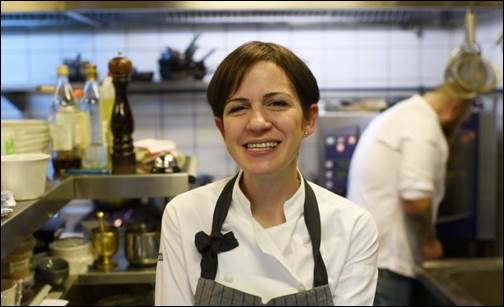Pulses – nutritious seeds for a sustainable future, published recently by FAO, introduces beans, lentils and other pulses and explores how they figure in the history and culture of different world regions.
The book features 10 internationally acclaimed chefs who give their views on pulses and how they make use of them it in their kitchens.
Turkey’s Didem Senol – owner of the prestigious “Lokanta Maya” and “Gram” restaurants in Istanbul, and author of two books, Kızınız Defneyi Oğlumuz İskorpite (Flavours of the Aegean Sea) and Biraz Maya, Biraz Gram (Some Maya, Some Gram) – represents the Eastern Europe and Western Asia region in the book.
“I cannot imagine cooking without pulses,” Senol says in a video produced to introduce the book for the International Year of Pulses 2016. Some of her special pulse-based recipes, which she shares in the book, are red lentil burgers, warm hummus, and broad bean dip.
Recently Senol gave an interview to FAO’s Ankara-based communication specialist Ozge Dogan.
How did you feel when the UN named 2016 International Year of Pulses?
It is a very precious experience to cook with pulses. As a person close to the roots of a cuisine containing so many dishes with pulses, it was exciting to see these foods being valued in the wider world.
How do you position pulses on your restaurant menus?
We have the same concept at both Lokanta Maya and Gram: we cook with seasonal and local ingredients, and are creative in flavoring the ingredients that change depending on the season. For mezze or appetizers, we use pulses as pate’ or salad. We also put them into seafood dishes, soups and dishes made with olive oil.
Tell us about the connection between Turkish cuisine and pulses.
I think pulses are where they deserve to be in Turkish cuisine. They are so easy to work with because of their nutritional features, convenience of storage conditions, and the way they enrich a meal.
Did you like lentils and chickpeas as a child?
Always! Green lentil soup with noodles would be in the top five of my list of favourite dishes. Tripe with chickpeas is one of the remarkable dishes that were cooked in our home. Since my grandfather loved it so much, my grandmother would cook it with great care. In our family, white bean pate’ is accompanied by meatballs instead of bean salad.
An Istanbul-based culinary project aims to rebrand traditional Anatolian cuisine as ‘cool.’ Will pulses be cool one day?
Absolutely – in fact, they are already cool! They can be a side ingredient next to a hip main dish, and they can be the main ingredient at the same time. I think pulses are the best supporting players. Last week, for instance, clams with borlotti beans in olive oil received rave reviews from our customers. I guess the important thing is how you compose the meal.
Any final thoughts?
I believe being a cook means being able to make a truly delicious meal with the simplest, easiest ingredients that everyone has access to – rather than succeeding in making a good piece of fileted steak, escallop or duck. When you consider the hunger situation in the world, we should be thinking more about how we can make the most of foods like pulses, grains, fruit and vegetables.
2016 International Year of Pulses was proposed to the United Nations General Assembly as a joint effort of the Governments of Turkey and Pakistan. The purpose of the Year is to highlight the role of pulses in addressing the global food security and environmental challenges.


